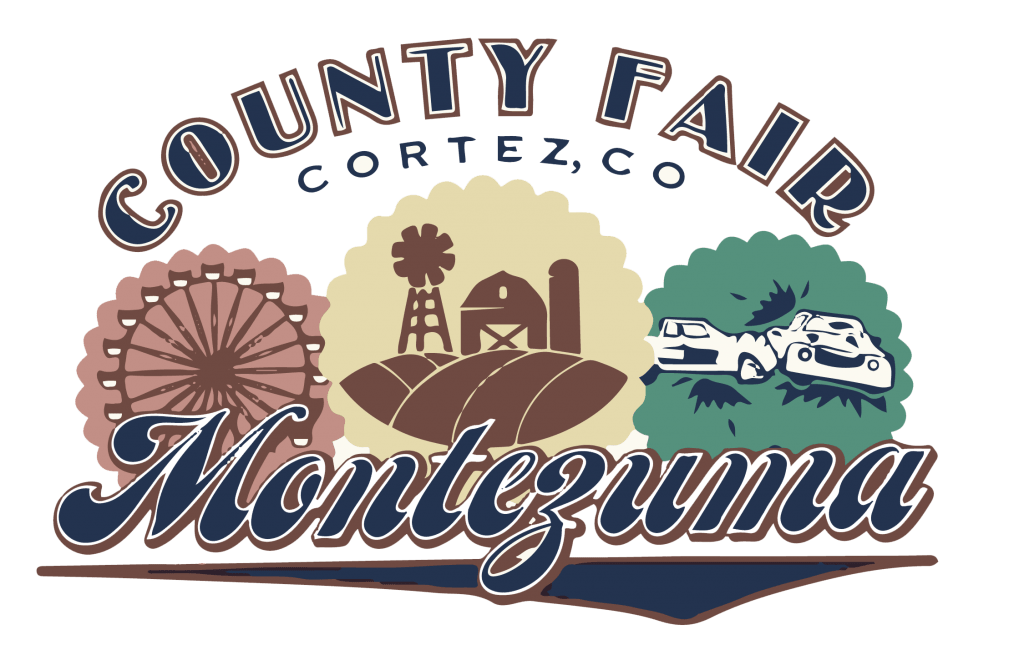
Saturday, July 12
8:00am 4-H Archery Shoot | Archery Range
Saturday, July 19
8:00am 4-H/FFA/Open Class Horse Show |Main Barn
Saturday, July 26
9:00 am 4-H .22 Rifle & .22 Pistol Shoot|4CRP Outdoor Range
3:00 pm FFA Members Panel Staging – REQUIRED
5:00pm 4-H General Project Set up – REQUIRED
6:00pm 4-H & FFA Members Pen Set Up -REQUIRED
Bucket Calf Open Class Pen Set Up – REQUIRED
Sunday, July 27
7:00am Rocket Launch | Race Track
9:00am Family Gymkhana | Outdoor Arena
1:00pm 4-H Shotgun Shoot |Cortez Trap Club
2:00 – 4:00pm Open Class Entries Taken | Main Barn
Monday, July 28
8:00am – 10:00am Open Class Entries Taken | Main Barn
9:00am – 10:00am 4-H General Project Entries | Main Barn
10:30am 4-H Interviews/Judging |Main Barn
(Community Open Class Judging to follow)
12:00 pm – Herdsmanship Interviews & Poster Judging | Main
Barn
3:30 pm 4-H Cake Decorating Contest | Main Barn
4:00 pm 4-H Fine Arts Contest | Main Barn
4:30 pm 4-H Demonstration Contest | Main Barn
5:00 pm 4-H Fashion Revue Contest | Main Barn
6:00 pm 4-H Cat Contest | Main Barn
Tuesday, July 29
~Carcass Contest will immediately follow weigh-in~
10:00am – 11:00am Goat Check/Weigh-In | Scale Barn
12:00pm – 1:00pm Beef Check/Weigh-In | Scale Barn
2:00pm – 3:00pm Sheep Check/Weigh-In | Scale Barn
4:00pm – 5:00pm Swine Check/Weigh-In | Scale Barn
6:00pm – 7:00pm Rabbit/Poultry Check-In |Rabbit/Poultry
Barn
1:00pm – 5:00pm Vendor Check-In |Main Barn
Wednesday, July 30
8:00am 4-H/FFA Rabbit Show | Open class | Main Barn
9:00am – 5:30pm Exhibits Open to Public
11:00am Livestock Exhibitor Test | Upstairs Main Barn
4:00pm 4-H/FFA Goat Show |Open class |Main Barn
6:00pm Goat Roping Registration |Outdoor Arena
7:00pm Goat Roping |Outdoor Arena
Thursday, July 31
8:00am 4-H/FFA & Open Class Poultry Show | Poultry Barn
9:00am – 5:30pm Exhibits Open to Public
10:00am IFA Fun Event | Main Barn
11:00am FFA Peewee and Adult Showmanship | Swine Barn
3:00pm Bucket Calf Show |Main Barn
3:15pm 4-H/FFA Beef Show | Open class |Main Barn
Friday, August 1 – RED FRIDAY
8:00am 4-H/FFA Swine Show | Open class |Swine Barn
9:00am – 5:30pm Exhibits Open to Public
9:00am Rooster Crowing |Poultry Barn
10:00am Rabbit Expo | Rabbit Barn
10:30am Bunnies & More – Easter Egg Hunt | South Barn
11:00am Hoofbeats – Oreo Eating Contest | Main Barn
11:30am Kalvin’s Kids – Dummy Roping | South Side Beef Barn
12:00pm Barnyard Critters – Minute to Win it | East Side South
Barn
1:00pm IFA Fun Event | Main Barn
3:00pm 4-H/FFA Sheep Show | Open class |Main Barn
3:00pm Four Corners Community Bank Money Hunt
Ages 3-4 | Main Barn
3:30pm Four Corners Community Bank Money Hunt
Ages 5-6 | Main Barn
4:00pm Four Corners Community Bank Money Hunt
Ages 7-8 | Main Barn
6:00pm Ranch Rodeo – Entries Due| Outdoor Arena
7:00pm Ranch Rodeo | Outdoor Arena
Saturday, August 2
7:30am 4-H/FFA MANDATORY SALE MEETING |Main Barn
9:00am – 5:30pm Exhibits Open to Public
9:30am First National Bank Greased Pig Chase | Swine Barn
10:30am Round Up – Watermelon Eating Contest | Main Barn
11:00am Master Showman | Main Barn
12:00pm Four Corners Community Bank Money Hunt
Ages 3-4 | Main Barn
12:30pm Four Corners Community Bank Money Hunt
Ages 5-6 | Main Barn
1:00pm Four Corners Community Bank Money Hunt
Ages 7-8 | Main Barn
1:00pm Greatest Pie in the County Contest | Main Barn
1:30pm Battle Rock – Ice Cream Eating Contest | Main Barn
2:00pm IFA Fun Event | Main Barn
3:00pm Salsa Contest | Main Barn
4:00pm – 5:15pm Buyer Meet and Greet | Livestock Barns
4:00pm – 6:00pm Buyer Luncheon | Main Barn
6:00pm Junior Livestock Sale | Main Barn
Sunday, August 3
8:00am-9:00am General Project Release | Main Barn
9:00am-10:00am General Project Tear Down – REQUIRED
9:00am-10:00am 4-H/FFA Trash Clean Up – REQUIRED
12:00pm Livestock Release/Pen Tear Down REQUIRED
FFA Members – Panels Back to Storage – REQUIRED
The purpose of the Fair Board is to organize, coordinate, and manage a community event known as the Montezuma County Fair. The Fair Board shall be the Managing Board of the Montezuma County Fair appointed by and under the direction of the Board of Montezuma County Commissioners at: montezumacountyfairboard@gmail.com
The Fair Board shall make all rules and regulations pertaining to exhibits, displays, events, and activities as within the scope of the objectives and purposes for which the Fair Board was appointed.
Montezuma County Fair Board meetings will be held the third Monday of every month at 7pm at the Montezuma County Fairgrounds.
(All Interested Parties are Welcome to Attend)